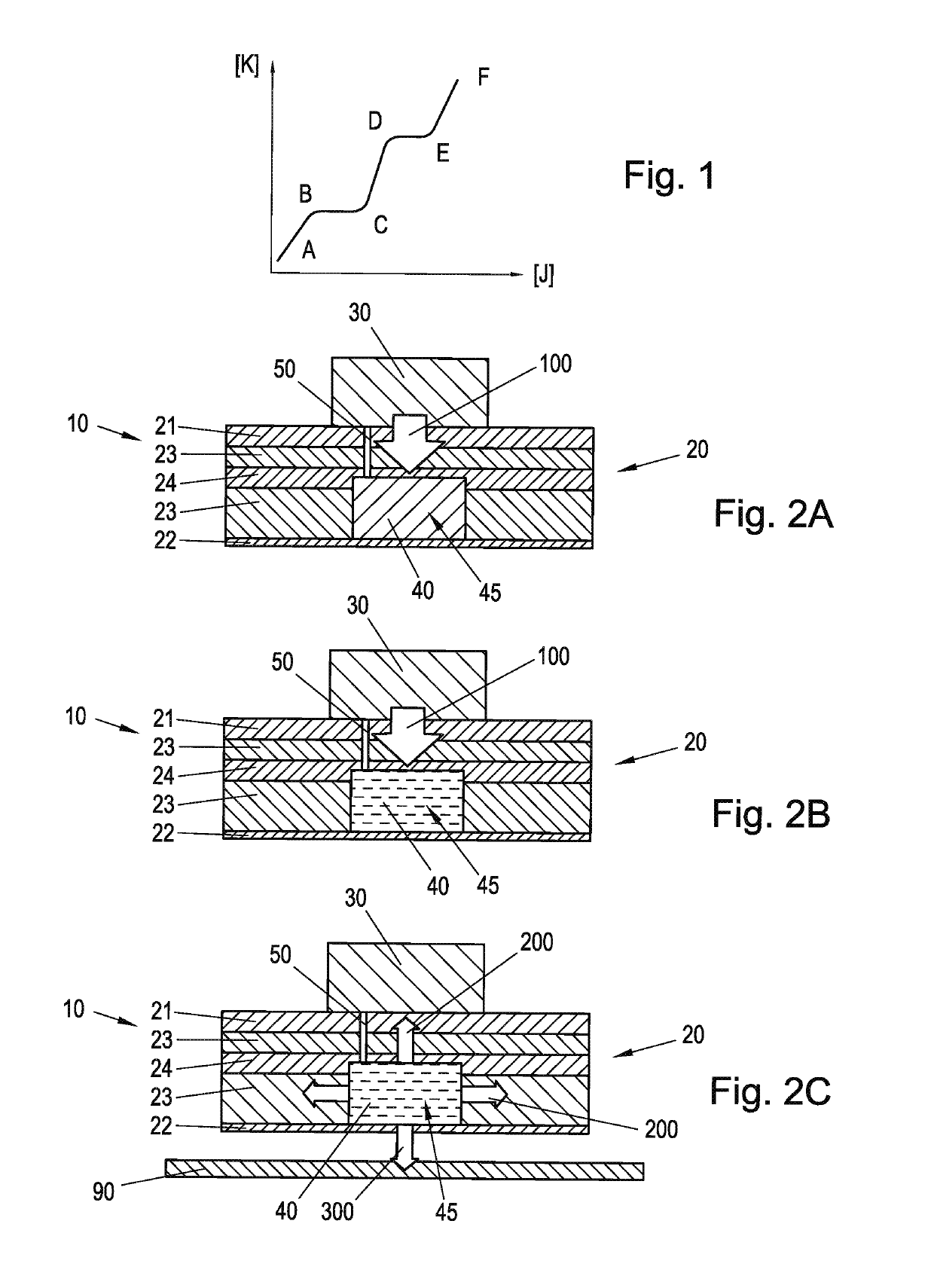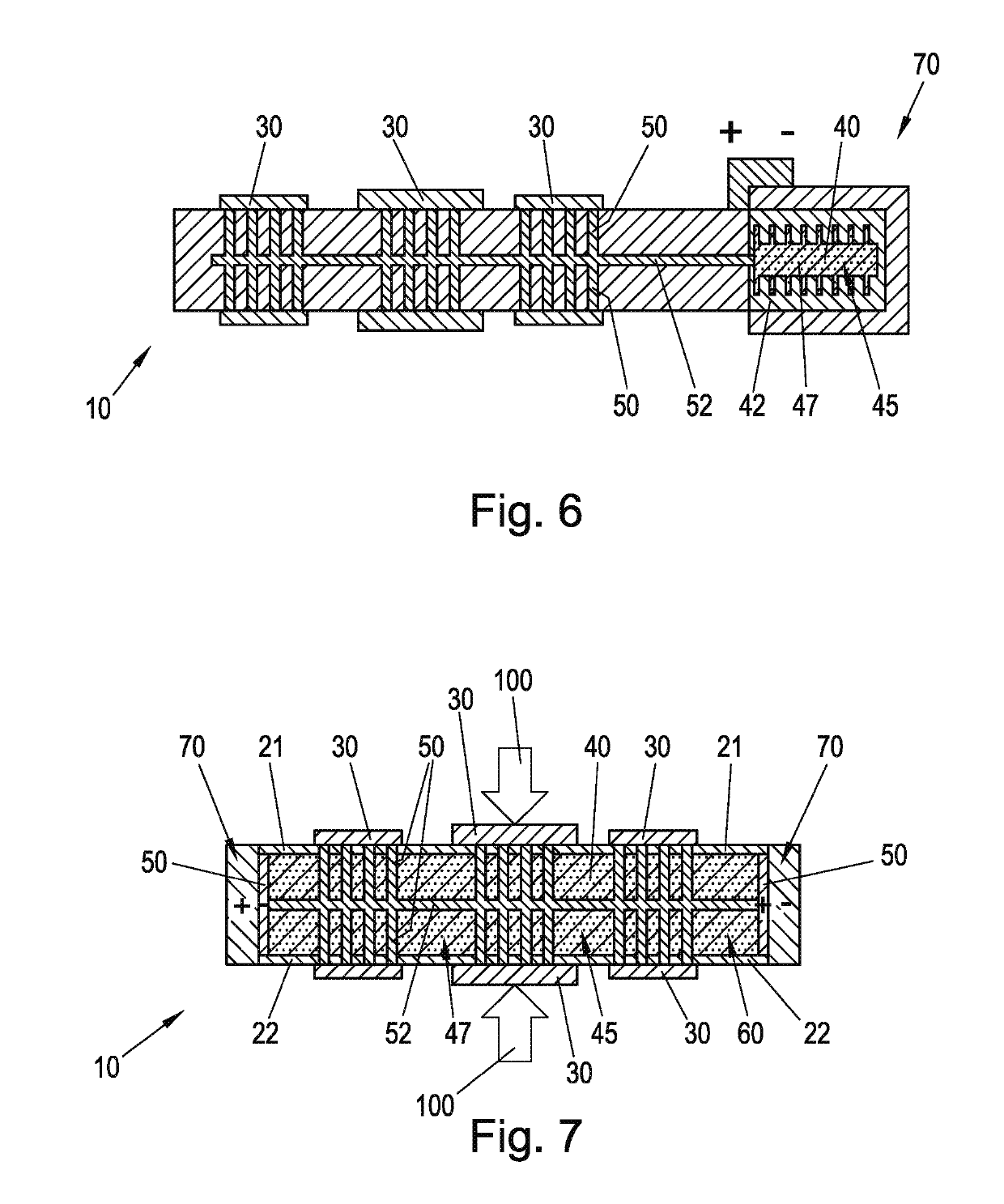Heat Capacitive Component Carrier and Method to Produce Said Component Carrier
- Summary
- Abstract
- Description
- Claims
- Application Information
AI Technical Summary
Benefits of technology
Problems solved by technology
Method used
Image
Examples
first embodiment
[0135]FIG. 3 depicts in a cross-sectional side view a detail of a component carrier 10 according to the invention. Here a possible printed circuit board build-up is shown with a latent-heat storage unit 40 comprising a phase-change material 45. Here a copper structure is built as cooling body 42 to enclose the phase-change material 45, which is for example microencapsulated phase-change material 47. The cooling body 42 is designed as heat-exchanger with an enlarged inner surface. The latent-heat storage unit 40 with its copper structure 42 is directly connected with several thermal vias 50 to hot-spots of heat-passage components 30 that are embedded within not explicitly shown layers 20 like outside surface layers 21, 22 and inner layers 23, 24 of the component carrier 10. Depending on the layer design, there may be layers 20 made of conducting material and also layers 20 made of insulating pre-preg material 28. Another heat-passage component 30 is surface-mounted on top of the prin...
second embodiment
[0136]FIG. 4 shows in a cross-sectional side view a detail of a component carrier 10 according to the invention. Here within an intermediate printed circuit board product the hot-spots of the heat-passage components 30 are thermally connected via thermal vias 50 to a central heat pipe 52. The heat pipe 52 however is directly connected to a latent-heat storage unit 40 that has a cooling body 42 made of a copper structure and is filled with phase-change material 45 which is here microencapsulated phase-change material 47. The cooling body 42 is designed as heat-exchanger with an enlarged inner surface to enhance the heat conduct of the stored latent heat to quickly reverse the phase-change process and to reduce temperature of the phase-change material 47.
third embodiment
[0137]FIG. 5 depicts in a cross-sectional side view a detail of a component carrier 10 according to the invention. Here the heat-passage components 30 are surface-mounted on an intermediate printed circuit board product, which comprises a matrix material carrier 60 as latent-heat storage unit 40 made of a foam material 29. The phase-change material 45 which is here microencapsulated phase-change material 47 is arranged within the cavities 61 of the matrix material carrier 60. Hot-spots of the heat-passage components 30 are thermally connected via thermal vias 50 to a central heat pipe 52 that runs through the matrix material carrier 60 filled with PCM 45.
PUM
 Login to View More
Login to View More Abstract
Description
Claims
Application Information
 Login to View More
Login to View More - R&D Engineer
- R&D Manager
- IP Professional
- Industry Leading Data Capabilities
- Powerful AI technology
- Patent DNA Extraction
Browse by: Latest US Patents, China's latest patents, Technical Efficacy Thesaurus, Application Domain, Technology Topic, Popular Technical Reports.
© 2024 PatSnap. All rights reserved.Legal|Privacy policy|Modern Slavery Act Transparency Statement|Sitemap|About US| Contact US: help@patsnap.com










